Why cook over an Icelandic geyser? Because you can
The island nation’s geothermal heat is often used to bake bread, but our writer wondered if it could fire a whole meal – then set out to do that
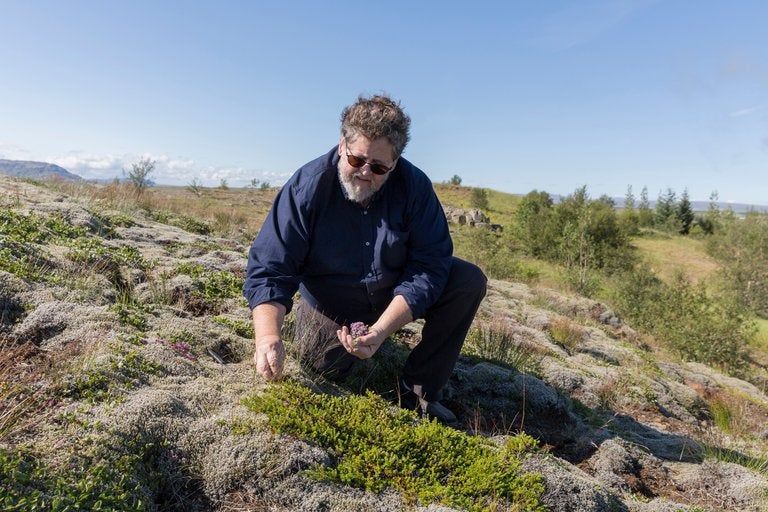
Standing in the mud of the Myvatn geyser field in northern Iceland, Kolla Ivarsdottir lifted the lid of her makeshift bread oven. It had been fashioned from the drum of an old washing machine and buried in the geothermally heated earth. All around us mudpots burbled and columns of steam shot skyward, powered by the heat of nascent volcanoes.
Ivarsdottir, a mother-of-three who sells her bread in a local crafts market, reached into the oven and retrieved a milk carton full of just-baked lava bread, a sweet, dense rye bread that has been made in the hot earth here for centuries. She cut the still-hot loaf into thick slices. It is best eaten, she said, “completely covered by a slab of cold butter as thick as your hand, and a slice of smoked salmon, just as thick.” We settled for bread and butter – still a supernal combination.
“Do many people cook other things this way?” I asked, eyeing the natural heat sources all around me.
“Not much,” she replied. “Sometimes a goose that a hunter shot, but most often, just the lava bread.”
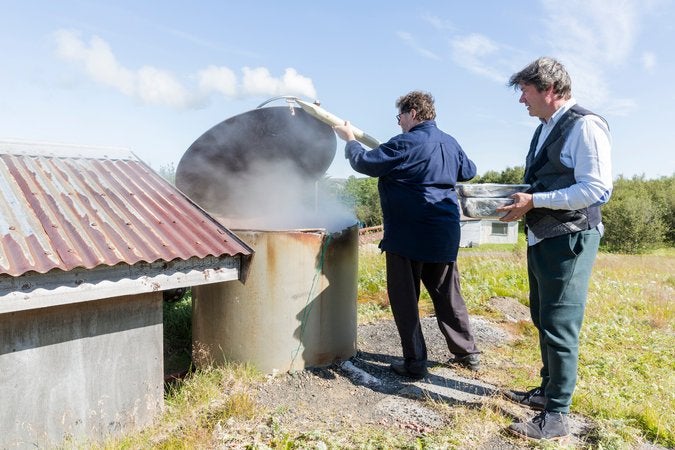
I found this surprising in an energy-rich and conservation-minded country that is also a pioneer in modern Nordic cuisine. In this era of slow cookers and sous-vide, wouldn’t it be possible, I wondered, to make a whole meal using Iceland’s natural geothermal ovens?
I did more than wonder: I decided to test my proposition, a quest that led me last summer on a wide-ranging tour of this island’s culinary riches.
A call to restaurant critic and fish exporter Kjartan Olafsson, my go-to source for all things Icelandic, caught him in the midst of haying for the horses that carry him and his wife on off-road forays into the wilderness. In this land of rapid weather changes and not much arable land, the folk wisdom of making hay while the sun shines is a deeply held article of faith.
“I have just the guy for you,” he said.
At his suggestion, I immediately set out on an eight-hour drive to Reykholt, a village in the south-west. Although it has the some of grandest scenery on earth, Iceland is a small country; 16 hours by car will take you on a complete circuit.
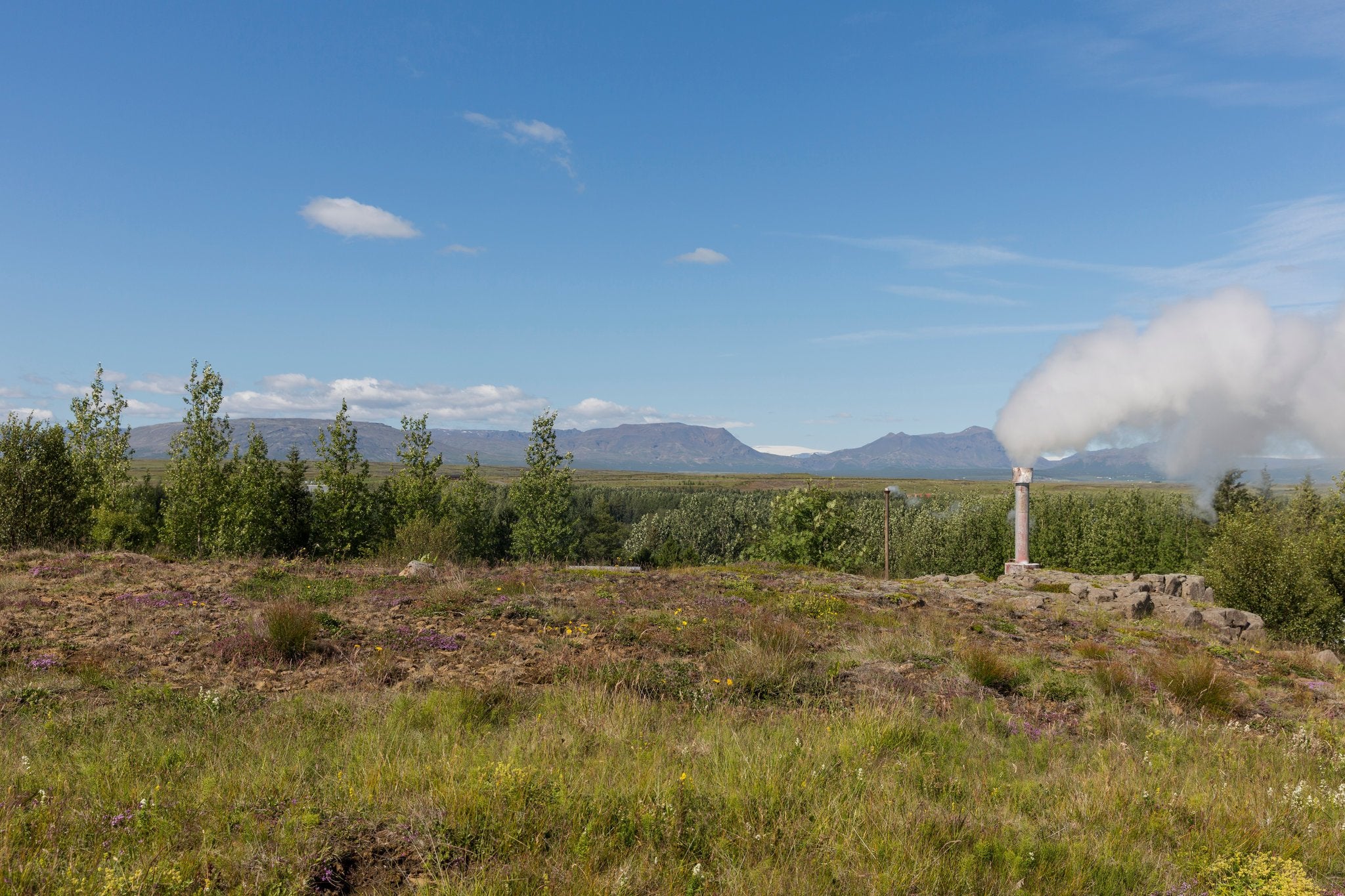
The next day, I met Jon Sigfusson in Reykholt, where he is the chef at Fridheimar, a restaurant under the same roof as a futuristic indoor farm of the same name. About a fifth of Iceland’s tomatoes are grown there on soaring vines – as tall as a two-storey house – under golden lamps in geothermally heated greenhouses. The restaurant’s whole menu, including cocktails, is based on tomatoes.
Before embarking on this experimental venture, Sigfusson was a traditional fine-dining chef. He cooked in elegant restaurants and for visiting dignitaries like US Secretary of State Madeleine Albright, to whom he served an appetiser of puffin crudo.
Puffins, it should be noted, are not protected as an endangered species in Iceland. They are one of the few native game birds available to Icelandic hunters. In keeping with the law, Sigfusson hunts them only in the traditional way, by dangling over the edge of treacherous cliffs, wielding a 15-foot pole with a net at the end.
Sigfusson and his wife, Asborg, returned to Reykholt, his native village, after raising their children in Reykjavik. They were looking for a slower pace of life. He did not foresee the runaway success that the tomato restaurant would have, but he still maintains a small-town existence, more in tune with nature. He is proud of his successful recent effort to marshal local opposition to the installation of street lamps.
“I moved here because I want the moonlight, the stars and the Northern Lights,” he said.
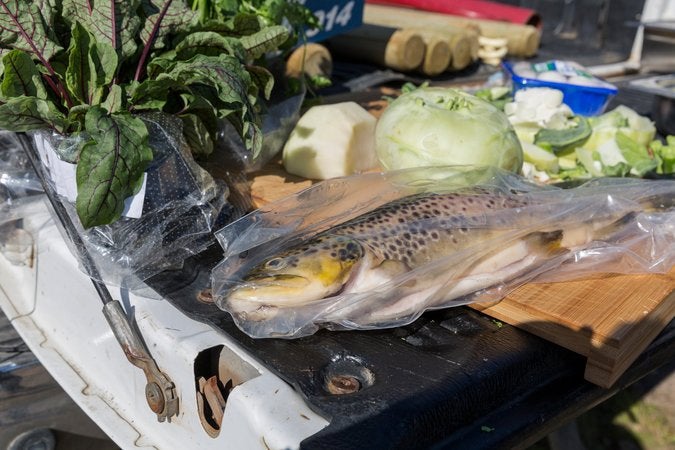
In that low-tech spirit, our group – Olafsson; his wife, Karitas; my wife, Melinda; and I – hatched a plan to cook at the local geyser oven, a feature of many rural Icelandic towns. A short drive from the restaurant, it sits on a rise with a hundred-mile vista to the south and east, a panorama of big rivers and lava fields. In the distance, Hekla, an active volcano, hulks over the plain. In medieval times it was said that the birds that circle the sleeping volcano were the souls of sinners queueing up for the descent into hell.
“The water we are drinking fell as rain and snow on that glacier 700 years ago,” Sigfusson said, pointing west to the mountains of the Mid-Atlantic Ridge, which rise up from the North Atlantic rift that marks the separation of Eurasia from North America.
We were standing on the hill above Reykholt, where the town’s geyser has been capped with a roughly finished housing of concrete, topped by a ramshackle smokestack. From that source, the village channels steam and hot water that supply part of the heat and power needs of the modern community.
Some of the hot vapour is also diverted to the village’s communal oven, where Sigfusson proposed to cook our meal. It’s a much safer way to cook in geothermal heat than tiptoeing around boiling geysers.
He opened the geyser oven, propping it up with a fence post so that I could peer in safely. The escaping steam was as hot as a sauna and, at the bottom of the oven, a good deal hotter (about 200F, or 93C). It smelt a bit sulphurous, too, but that comes with the territory when tapping the heat of the Earth’s core.
We agreed to meet the following morning to cook a menu of local fare, including trout from the nearby Tungufljot river and grass-fed Icelandic lamb, a hardy local breed that has the same salty succulence of the famous French agneau de pré-salé, lamb raised in salt-marsh meadows.
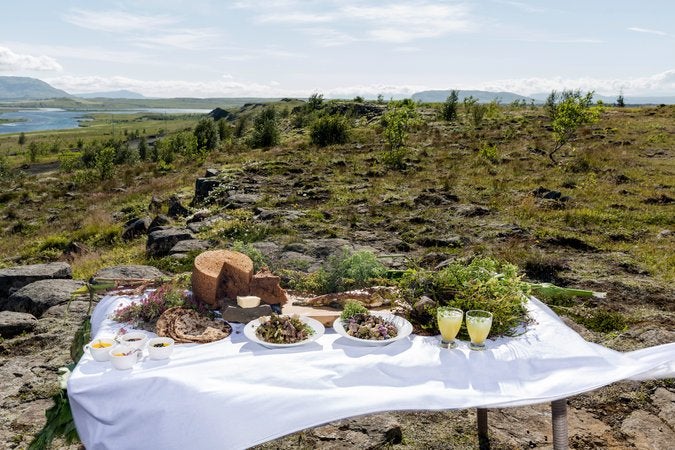
For dessert, Sigfusson suggested abrystir, made from the first milk (nutrient-dense colostrum) produced by a nursing cow. “Whenever one of our cows gave birth, my grandma would take some of the milk and put it in a teakettle set into a pan of hot water,” he said. “It was so rich that pretty soon it had set into a crème brûlée all on its own – no eggs.”
The next day broke bluebird-bright, with cotton-candy clouds and a light breeze. “First we forage,” Sigfusson said when we met. “Wild herbs are everywhere.”
Our small group ranged along the hillside. The ground was carpeted by wild thyme, with purple flowers the size of a gumdrop nestling among tender flavourful leaves. In the lusher folds and hollows, we found angelica, a plant with a floral, almost verbena note and just a touch of bitterness – well suited to contain the broad flavours of the unctuous lamb.
Sigfusson lopped off two stalks of wild hops to season the broth, a new use – at least to me – of the brewmaster’s mainstay.
As we prepped the meal, he offered us cold beers and appetisers: smoked ptarmigan and cured salmon on rye crackers, with tomato jams and chutneys from the restaurant and, as with just about everything one eats in Iceland, cold fresh butter.
The ptarmigan had been smoked over dried smouldering sheep dung, which is pretty much the only thing you can use for smoking in this relatively treeless landscape, where a 15-foot fir tree towers like a sequoia.
With the tailgate of his truck serving as our work surface, we separated some greenhouse romanesco into florets and tossed them into a Dutch oven. We cubed baby kohlrabi, did the same with the smoky brined lamb shoulder, then added the herbs, the hops and a half-dozen glugs of cream. As we worked, the geyser would blow its top every seven minutes, and we had to pause, retreating beyond the reach of its warm, misty spray.
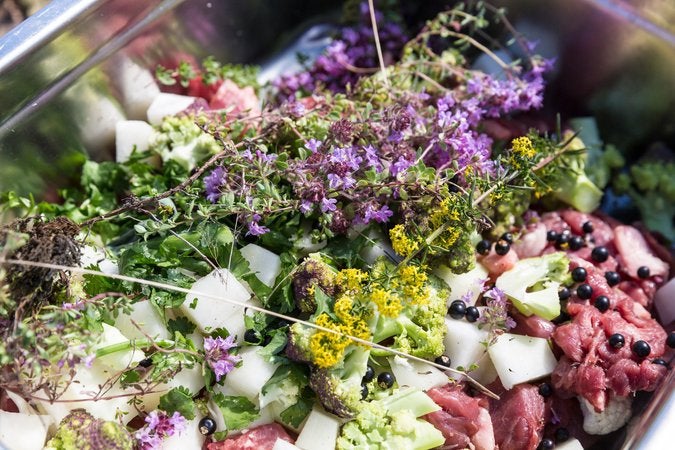
Next, we poured the colostrum into ramekins that we set into our bain-marie – a roasting pan half-filled with water. Then Sigfusson brought out a 2lb brown trout he had caught himself (“on a Hairy Mary salmon fly,” he reported with pride). We stuffed the brightly spotted trout with sorrel, angelica and scallions, folded it up in parchment paper (en papillote is an ideal way to cook in a steam oven) and placed it in with the rest of our feast.
We left the oven to work its magic and, a few hours later, returned to unburden it of our meal. The bread, Jon’s own variation on this Viking staple, could have easily sufficed for the whole meal had we not exercised some restraint. The trout was flaky and herbaceous. The milk pudding, topped with a jam of green tomatoes, ginger, and honey was super-creamy.
But the star of the show was the lamb braise. The meat was salty and smoky, the creamy gravy enriched with the captured juices of lamb, romanesco and kohlrabi, and everything suffused with wild thyme, angelica and hops – which brought the sweetness-enhancing quality of fresh tarragon. I made a note to try it under the skin of my next roast chicken.
The breeze was gentle, and the ground was soft and dry enough to lie or sit on without getting damp. Late afternoon sun lit up the landscape formed by long ago by lava flows. It looked like pale-green velvet rippled by the breeze.
I’ll admit to a tingle of schadenfreude as I looked over at Hekla to see to see if the soul of anyone on my hit list was plunging into hellfire, but I didn’t dwell on it. The day was too lovely, the natural world too congenial and the food too satisfying to yield to uncharitable fantasies.
© New York Times
Join our commenting forum
Join thought-provoking conversations, follow other Independent readers and see their replies
Comments
Bookmark popover
Removed from bookmarks